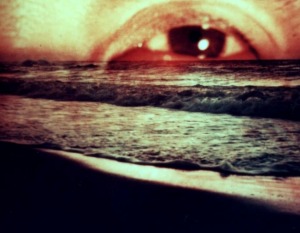Photography Proposal (750 Words)
Photography Proposal
My initial idea for my Final Year Photography Project centres around the writings of Franz Kafka and techniques used by Japanese surrealist Kansuke Yamamoto in his photography. In my previous two photography projects I have focused on landscapes, as it’s the subject I am most interested in. This years project will also revolve around landscape photography, but with a different approach.
Franz Kafka’s writings often present a grotesque view on society, with the characters suffering from guilt, isolation, and anxiety that attempt to search for their personal salvation. Kafka’s work The Zurau Aphorisms will be the focus of my photographs. Aphorism #87 “A faith like an axe. As heavy, as light.” (Kafka 1917-1918, cited in Calasso 2006) is an example of the theological issues that Kafka dwells on in the Zurau Aphorisms. Other topics that are dealt with are good and evil, alienation and redemption and isolation. These topics have strong visual signifiers, thus creating a photograph, which will play a heavy emphasis on visual signifiers and how the viewer interprets them. I feel as this will serve as an interesting theoretical approach to the project and will allow me to view landscapes and photography in a different way.
As I’m taking a surrealist theoretical approach, my photos will naturally be shot in a surrealist style. In David Bate’s Photography & Surrealism, he talks about what constitutes surrealism in photography. He proposes that there are three types of signifiers in surrealist photography: mimesis, prophotographic, and enigmatic (Bate 2004). These types of signifiers are different levels of what we as a viewer see as believable and unbelievable. Bate’s signifiers link with John Solt’s essay Perception, Misperception and Nonperception which refer to the works of Japanese surrealist Kansuke Yamamoto. This is where the inspiration for the aesthetic look of my photos will come from. Kansuke Yamamoto’s photographic techniques include creating collages of incongruent images, bending the dimensions of perception, and using dramatic sequences, usually a collection of three to five photographs (Solt 2001). One of the visual techniques of Yamamoto that I like is the layering of images on top of one another. With this technique he usually created a juxtaposition between the two images, thus forming a strong visual effect.
Another one of Yamamoto’s techniques that I am inspired by is his bending of dimensions, creating a surreal perspective. Therefore, this ideal of surrealism encapsulates the entire picture, from the way it’s shot, the subject of the shot and the meaning behind the shot. This is what I aim to recreate.
Kansuke Yamamoto’s landscape photography conforms to ‘the other’, thus disagreeing with David Bate’s idea that “‘Landscape’ is the taking shape in symbolic form of a space for the projection of psychical thoughts on culture, identification and ‘civilization’ under the name of nature” (Bate 2009, p93). Yamamoto is shooting landscape in a make believe setting. This is challenging the ideals of ‘Photographic vision’ (Bate 2009, p97), landscapes are not being surveyed photographically but being based on the personal identity of the photographer. This is my attempt to challenge what we see as landscape through the ideals of Kafka and the visual aesthetic of Yamamoto.
“There is an indefinite amount of information in a continuous-tone photograph, so enlargement usually reveals more detail but yields a fuzzier and grainier picture… A digital image, on the other hand, has precisely limited spatial and tonal resolution and contains a fixed amount of information.” (Mitchell 1992, cited in Manovich 1995)
I still haven’t decided whether to take my photographs using film or digital. This quote has made me think about the creative possibilities using film and how that would fit into my project. This idea of enlarging the picture to create a fuzzier picture opens up many possibilities with my project and allows me to play with ideas of texture in photography.
These are all my initial ideas for my landscape photography project. The use of camera has still yet to be decided but the theoretical and visual themes are there, and further research will narrow down what Aphorisms and what visual techniques I will use.
Bibliography
Bate, David (2004) Photography and Surrealism: Sexuality, Colonialism and Social Dissent. London: I.B Tauris & Co Ltd
Bate, David (2009) Photography: The Key Concepts. New York: BERG
Calasso, Robert (2006) The Zurau Aphorisms. New York: Harvill Secker
Kafka, Franz (2000) The Trial (Penguin Modern Classics) London: Penguin Classics
Manovich, Lev (1995) The Paradoxes of Digital Photography. Available from: http://manovich.net/TEXT/digital_photo.html (accessed: 23rd October 2013)
Solt, John (2001) Perception, Misperception and Nonperception. Available from: http://milkmag.org/163-2/ (accessed 23rd October 2013)
Photographs
Yamamoto, Kansuke (1956) The distance between landscape and dusk
Yamamoto, Kansuke (1939) Title Unknown


